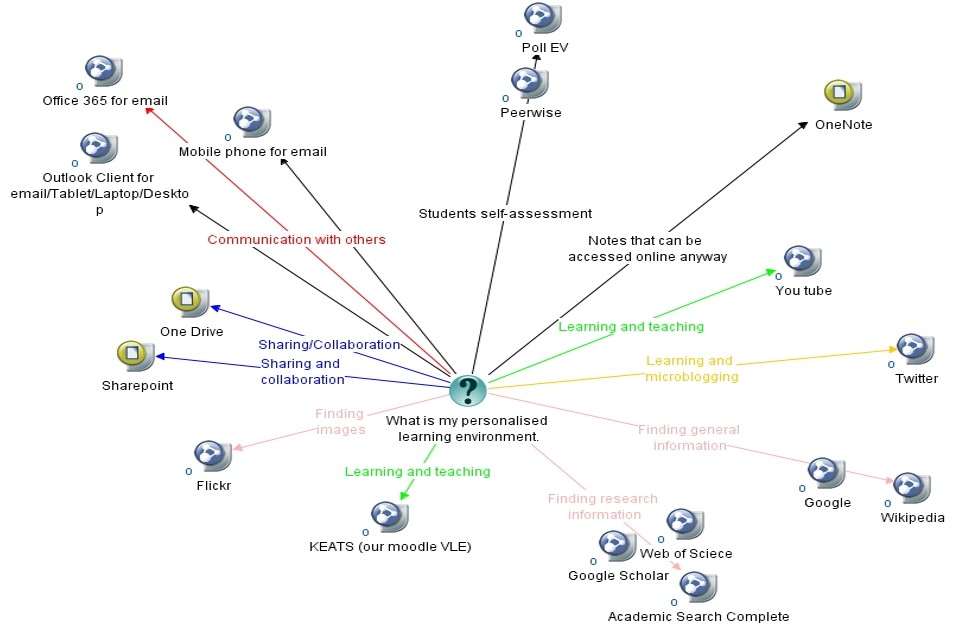As part of my studying H800 I recently had the opportunity to look for a paper on the future of educational technology. I selected this one:
Sanders, M. & George, A. Educ Inf Technol (2017). doi:10.1007/s10639-017-9604-3
This paper appealed to the scientist in me because it looked back very systematically to see why technology had not met the promise it was thought to show, a belief supported by reports such as ECAR (2015). In doing so they produced a technology innovation cycle.Here I consider each stage of the cycle and relate it to my own experiences (all universities shall remain nameless!)
1. Installation of expensive new ICT system. The authors suggest that this stage is influenced by hype from biased promoters and decisions by top-down naïve visionaries. I do have experience of this; a new system comes in with little consultation of those on the front line, often accompanied by unsubstantiated claims of success (or anecdotal claims of a problem this technology will solve). These claims, interestingly, often come other contexts and are rarely backed up by substantive evidence. I compare this situation to research. I would never change the set up of my lab just because a sales person said their kit was better than my existing equipment. Instead, I am likely to wait until I see solid research papers from labs doing similar work to me using the newer kit, or in the very least talk to other researchers who have the new kit and see what it is helping them do. Even then I would need to see it was significantly better (in terms of saving time or improved accuracy) before I would upgrade. I wonder why we don't apply the same rationale to educational technologies.
2. Trialling by enthusiastic early adopters. I thought quite carefully about this one because I think (and worry) that I am one of these enthusiastic early adopters! They suggest that a factor influencing this is poor teacher training. I do partially agree with this because I have endured numerous training sessions on various educational technologies and, on reflection, I can see that the focus is on process not meaning i.e. this is how you upload a video or set up a poll as opposed to why you might want to do these things. That said, this has not been a consistent experience and some training is very good. I am also a big fan of the champion idea as well because I think it is a way to get to those who would otherwise not engage at all.
3. Low uptake by other educators. This is all too often the experience we have but I think it is influenced by many practical things as well as just negative beliefs and attitudes towards the technology. For example, if you do not have time to rethink your modules or teaching significantly then any add-on technology will be less effective and having time is often an issue. There is also an all or none sense to this. If you will polling in one lecture, should not try it in all. I think unless things are considered best practice or policy, uptake will always be lower than ideal
4. Failure of technology to improve learning. They cite a number of factors influencing this including ineffective usage and the inappropriate nature of the technology. Both of which are likely to be important. I think there is a third important factor which is unreliable or invalid analysis of the effects of the technology. In addition, I suspect that technologies that are introduced institutionally are doomed to fail overall because the technology must be selected for the teaching and learning outcome so where these necessarily vary, results will be give a mixed picture at best.
5. Deterioration of an ageing ICT system. The authors suggest that a main factor driving this is the lack of initial financial planning. I do not have any direct experience of this but I am sure it does happen in some cases. I also think that another factor influencing this is outside/external promise. I am aware of situations where universities have held on to older technology on the promise of a newer version or upgrade that never appears.
6. Fading out the technology. Given the stages above, this seems inevitable and certainly I have experienced technologies being faded out, although more often they seem to be abruptly replaced!
 Seeing this map made me realise that I use far more tools than those provided by the VLE. Even if I look only at those used for study of H800 a reasonable proportion would still be listed. So now that I have found my PLE, what do I really think it means.
Seeing this map made me realise that I use far more tools than those provided by the VLE. Even if I look only at those used for study of H800 a reasonable proportion would still be listed. So now that I have found my PLE, what do I really think it means.